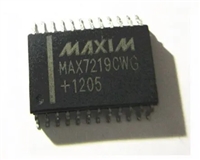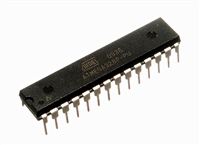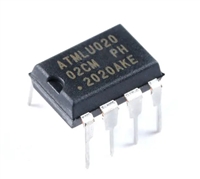V•I Chip Regulator
Pin / Control Functions
+In / -In DC Voltage Ports
AL Version
The V•I Chip maximum input voltage should not be exceeded. PRMs
have internal over / undervoltage lockout functions that prevent
operation outside of the specified input range. PRMs will turn on when
the input voltage rises above its undervoltage lockout. If the input
voltage exceeds the overvoltage lockout, PRMs will shut down until the
overvoltage fault clears. PC will toggle indicating an out of bounds
condition.
4
3
2
1
A
B
C
D
E
F
VC
PC
TM
IL
A
B
C
D
E
F
VH
SC
SG
OS
NC
NC
PR
CD
G
H
J
G
H
J
+IN
+OUT
K
K
L
M
N
P
L
M
N
P
+Out / -Out Factorized Voltage Output Ports
–IN
–OUT
These ports provide the Factorized Bus voltage output. The –Out port is
connected internally to the –In port through a current sense resistor.
The PRM has a maximum power and a maximum current rating and is
protected if either rating is exceeded. Do not short –Out to –In.
Bottom View
Signal Name
Designation
G1-K1,G2-K2
L1-P1, L2-P2
A1,A2
+In
–In
VC
PC
TM
IL
PR
VH
SC
SG
OS
VC – VTM Control
B1, B2
The VTM Control (VC) port supplies an initial VCC voltage to
C1, C2
D1, D2
downstream VTMs, enabling the VTMs and synchronizing the rise of
the VTM output voltage to that of the PRM. The VC port also provides
feedback to the PRM to compensate for voltage drop due to the VTM
output resistance. The PRM’s VC port should be connected to the VTM
VC port. A PRM VC port can drive a maximum of two (2) VTM VC ports.
F1, F2
A3, A4
B3, B4
C3, C4
D3, D4
CD
+Out
–Out
F3, F4
G3-K3, G4-K4
L3-P3, L4-P4
PC – Primary Control
The PRM voltage output is enabled when the PC pin is open circuit
(floating). To disable the PRM output voltage, the PC pin is pulled low.
Open collector optocouplers, transistors, or relays can be used to
control the PC pin. When using multiple PRMs in a high power array,
the PC ports should be tied together to synchronize their turn on.
During an abnormal condition the PC pin will pulse (Fig.12) as the PRM
initiates a restart cycle. This will continue until the abnormal condition
is rectified. The PC should not be used as an auxiliary voltage supply,
nor should it be switched at a rate greater than 1 Hz.
Figure 15 — PRM pin configuration
SC – Secondary Control
The load voltage may be controlled by connecting a resistor or voltage
source to the SC port. The slew rate of the output voltage may be
controlled by controlling the rate-of-rise of the voltage at the SC port
(e.g., to limit inrush current into a capacitive load).
SG – Signal Ground
TM – Factory Use Only
IL – Current Limit Adjust
This port provides a low inductance Kelvin connection to –In and
should be used as reference for the OS, CD, SC,VH and IL ports.
The PRM has a preset, maximum, current limit set point. The IL port
may be used to reduce the current limit set point to a lower value. See
“adjusting current limit” on page 10.
OS – Output Set
The application-specific value of the Factorized Bus voltage (Vf) is set
by connecting a resistor between OS and SG. Resistor value selection is
shown in Table 1 on Page 2, and described on Page 9. If no resistor is
connected, the PRM output will be approximately one volt. If set
resistor is not collocated with the PRM a load bypass capacitor of
~200 pF may be required.
PR – Parallel Port
The PR port signal, which is proportional to the PRM output power,
supports current sharing of two PRMs. To enable current sharing, PR
ports should be interconnected. Steps should be taken to minimize
coupling noise into the interconnecting bus. Terminate this port with a
10 k equivalent resistance to SG, e.g. 10 k for a single PRM, 20 k each
for 2 PRMs in parallel, 30 k each for 3 PRMs in parallel etc.. Please
consult Vicor Applications Engineering regarding additional
CD – Compensation Device
Adaptive Loop control is configured by connecting an external resistor
between the CD port and SG. Selection of an appropriate resistor value
(see Equation 2 on Page 9 and Table 1 on Page 2) configures the PRM
to compensate for voltage drops in the equivalent output resistance of
the VTM and the PRM-VTM distribution bus. If no resistor is connected
to CD, the PRM will be in Local Loop mode and will regulate the
+Out / –Out voltage to a fixed value.
considerations when paralleling more than two PRMs.
VH – Auxiliary Voltage
VH is a gated (e.g. mirrors PC), non-isolated, nominally 9 Volt,
regulated DC voltage (see “Auxiliary Pins” specifications, on Page 7)
that is referenced to SG. VH may be used to power external circuitry
having a total current consumption of no more than 5 mA under either
transient or steady state conditions including turn-on.
vicorpower.com
800-735-6200
V•I Chip Regulator
P036F048T12AL
Rev. 1.9
Page 8 of 14






 MAX7219驱动8段数码管详解及数据手册关键信息
MAX7219驱动8段数码管详解及数据手册关键信息

 ATMEGA328P技术资料深入分析
ATMEGA328P技术资料深入分析

 AT24C02芯片手册管脚信息、参数分析、应用领域详解
AT24C02芯片手册管脚信息、参数分析、应用领域详解

 AT24C256芯片手册参数分析、引脚说明、读写程序示例
AT24C256芯片手册参数分析、引脚说明、读写程序示例
